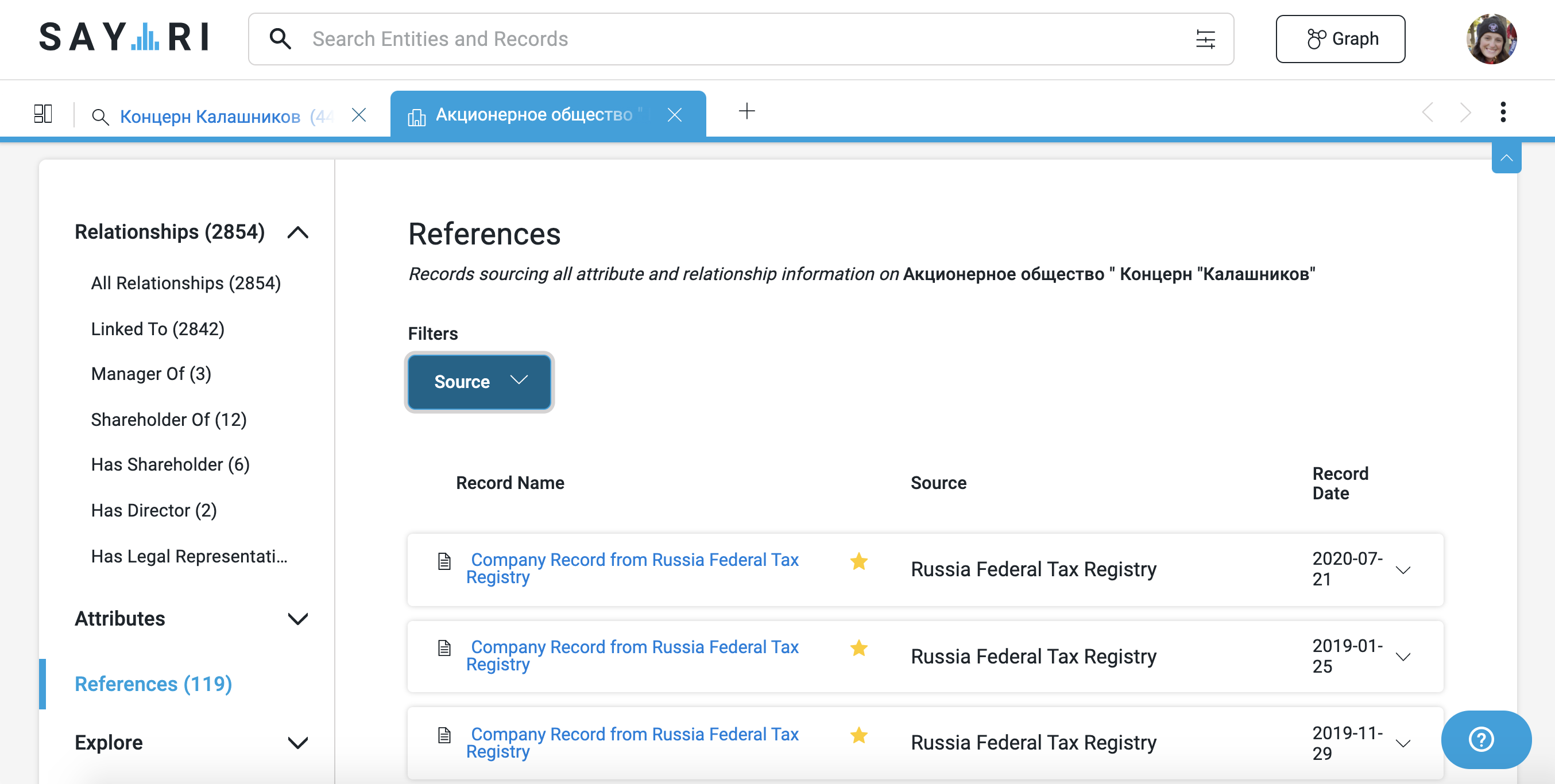Decoding the Russian Taxpayer Identification Number
Researching Russian corporate entities and individuals, as well as identifying ties between them, relies on a firm understanding of Russian corporate identifiers. In this post, we examine the Russian Taxpayer Identification Number (Идентификационный номер налогоплательщика) or INN.
Tax Identification Number (ИНН/INN)
In Russia, the tax code mandates that all individuals and businesses that pay taxes be issued a taxpayer identification number (INN) by Russia’s tax authority. The INN is a unique number, meaning that no two individuals or entities have the same INN.
The INN is a structured code containing information about the issuing body and the sequence of entry into the register. The number comprises 10 digits for businesses and 12 for individuals. The digits of the string break down into three parts. The first section (A) denotes the specific tax authority that issued the INN. The second section (B) indicates the sequence of entry. The final section (C) is a control number or checksum calculated by the tax authority according to an internal algorithm. This final value is used to check the number for errors.
For businesses, the tax identification number is structured in the following way:
AAAA BBBBB C
Foreign organizations operating in the Russian Federation receive the foreign organization code 9909 in place of the standard four-digit string indicating the issuing tax authority:
9909 BBBBB C
And for individuals, the tax identification number is structured as follows:
AAAA BBBBBB CC
(A = issuing authority; B = sequence of entry into the register; C = control)
How to use the INN
Most registers containing corporate information, both official and unofficial, are searchable by INN. Because the INN is unique, this eliminates the need for searching in cyrillic and parsing through multiple companies with the same name.
The INN is also useful for identifying connections and building out corporate networks. Due to its ubiquity, a subject’s INN usually appears on documents disclosing the subject’s corporate activities and holdings, such as annual and quarterly reports, contracts, and court records.
For example, if Company A LLC is a shareholder in Company B LLC, Company A’s INN will appear on Company B’s EGRUL report. The same is true for directors and shareholders. Unfortunately, searching EGRUL for a company’s INN only produces a result for that company’s EGRUL report. Results for other companies where the target company appears as a shareholder or manager do not appear.
However, with Sayari Search, searching by a specific INN produces results for any document where this number appears.
Finding companies tied to Kalashnikov Concern with tax identification numbers
To test this, let’s look at the Russian arms producer Kalashnikov Concern JSC, which the U.S. Department of the Treasury sanctioned in 2017. If we limit Sayari Graph to the 2018 and 2019 versions of the Russia Federal Tax Registry, a search for “Концерн Калашников” (Kalashnikov Concern) produces several results.

The first result is an EGRUL report for Kalashnikov Concern from 2019. In the document, we can see that the company’s INN is 1832090230.
Let’s now run a search for this number. We’ll enclose it in quotation marks to ensure an exact match. While a couple of results in the new list are for Kalashnikov Concern itself, the rest are entities in which the company has some form of corporate involvement, such as a shareholding or directorship.
When investigating Russian companies and individuals, try to determine your target’s INN first and run it through Sayari Search. This also reduces the likelihood of missing key pieces of a company’s history due to a name change. Searching by INN is the best way to identify entities where the target appears as a shareholder, director, or managing company.
